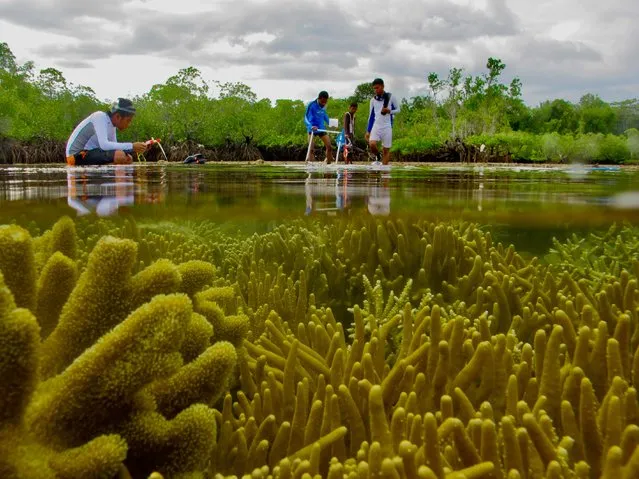
Young Mangrove Photographer of the Year Winner. Healthy Ecosystem by Fakhrizal Setiawan, Indonesia. (Photo by Fakhrizal Setiawan/Mangrove Photographer of the Year)
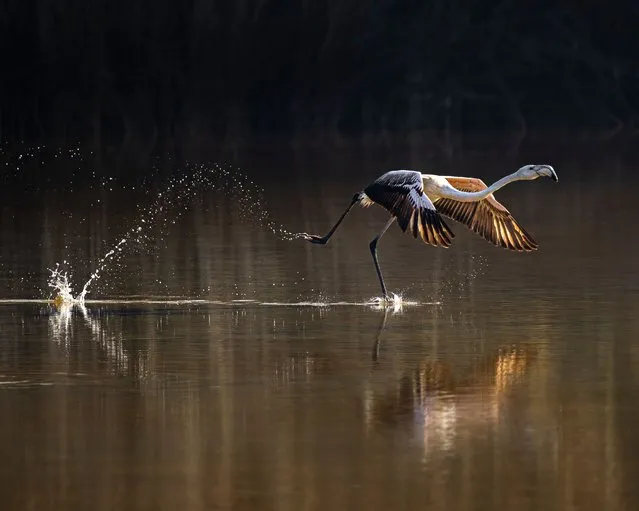
Mangroves & Wildlife Winner. Take off by Jayakumar MN, UAE. A greater flamingo (Phoenicopterus roseus) takes off on a migration journey across Asia, and will most likely return to the same coastal wetlands in the winter months. “It was feeding with its head in the water, before flying off into the morning light”. (Photo by Jayakumar MN/Mangrove Photographer of the Year)
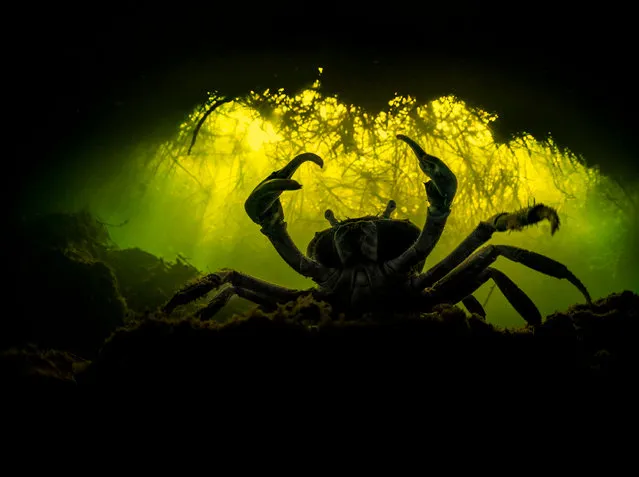
Mangroves & Underwater Winner. Blue Crab by Martin Broen, Mexico. The mysteries of a rarely seen natural environment. A blue crab (Callinectes sapidus) fishing in a unique transition between fresh and salt water in the Mexican cenotes. “During an exploration dive through the dark flooded caves, I came across this proudly standing crab silhouetted against the mangrove roots above”. (Photo by Martin Broen/Mangrove Photographer of the Year)
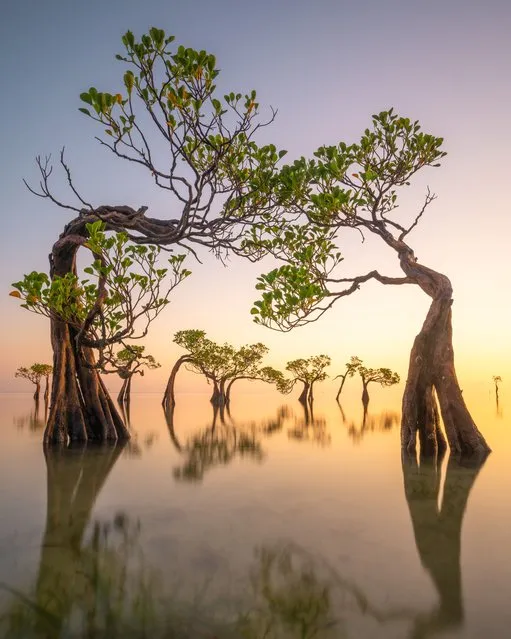
Mangroves & Landscape – Winner. Walakiri Dancing Trees by Loïc Dupuis, Indonesia. The sun rises along the peaceful beaches of East Sumba in Indonesia. “I wanted to capture the beauty and fragility of this unique wonder. We need to protect and visit places like this with great care, so future generations can also enjoy them”. (Photo by Loïc Dupuis/Mangrove Photographer of the Year)
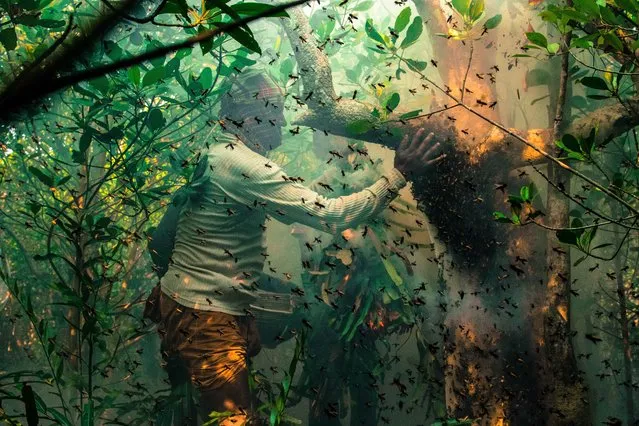
Mangroves and Humans – Winner. Honey Hunters by Muhammad Mostafigur Rahman, Bangladesh. Traditional honey collectors break a honeycomb to get honey in Sundarbans, a UNESCO World Heritage Site and a wildlife sanctuary in Bangladesh. As they move about in search of beehives in the wild, honey collectors run the risk of meeting a deadly foe – the Royal Bengal tiger. Both recent human development in the area and the climate crisis, in particular the rise in sea-levels, are threatening the ecology of the Sundarbans and with it, the way of life of the Moulis people. (Photo by Muhammad Mostafigur Rahman/Mangrove Photographer of the Year)
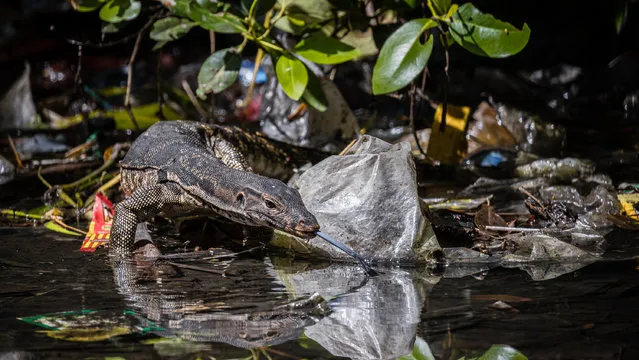
Mangroves & Conservation – Winner. New Normal by Kei Miyamoto, Indonesia. A water monitor lizard (Varanus salvator) struggles along the plastic filled forest floor foraging for food. “More and more plastic fills our mangrove forests and it’s affecting our wildlife that call it “home”. (Photo by Kei Miyamoto/Mangrove Photographer of the Year)
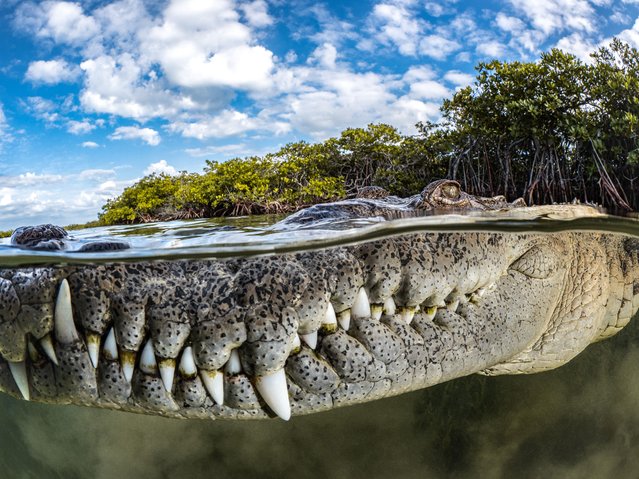
Guardian of the Mangroves – Overall Winner. Tanya Houppermans, Cuba. A curious American crocodile (Crocodylus acutus) swims right up to Tanya, at Gardens of the Queen (Jardines De La Reina), an archipelago off the coast of Cuba. It has been strictly protected since 1996, and is one of the most untouched marine ecosystems in the world. “The healthy population of American crocodiles is down to the pristine condition of the mangroves and I wanted to capture close ups of this gentle giant in its natural habitat. I hope this image can illustrate that protecting areas like this is so critical”. (Photo by Tanya Griffin Houppermans/Mangrove Photographer of the Year)
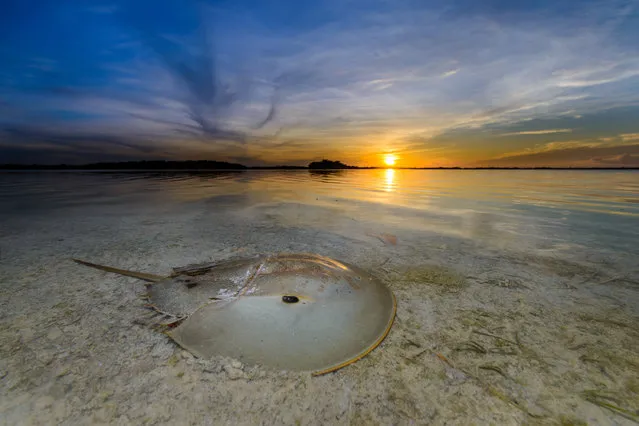
Mangroves & Wildlife – Highly Commended. Living Fossil by Fernando Constantino Martínez Belmar, Mexico. An Atlantic horseshoe crab (Limulus polyphemus) in the mangroves of Ria Lagartos Nature Reserve, Yucatan. Females can lay up to 20,000 eggs in one night playing an important role in providing nutrient-rich eggs to migratory birds. (Photo by Fernando Constantino Martínez Belmar/Mangrove Photographer of the Year)
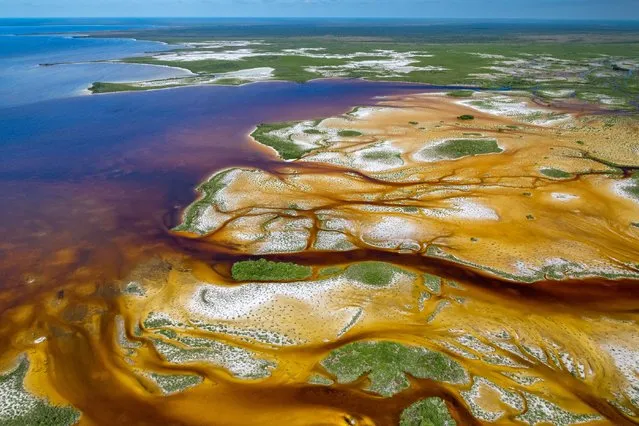
Mangroves & Landscape – Highly Commended. Humedal Amarillo by Humberto Bahena Basave, Mexico. Coastal lagoons, islands, and extensive mangrove swamps are found in the beautiful Chetumal Bay, Quintana Roo, Mexico. (Photo by Humberto Bahena Basave/Mangrove Photographer of the Year)
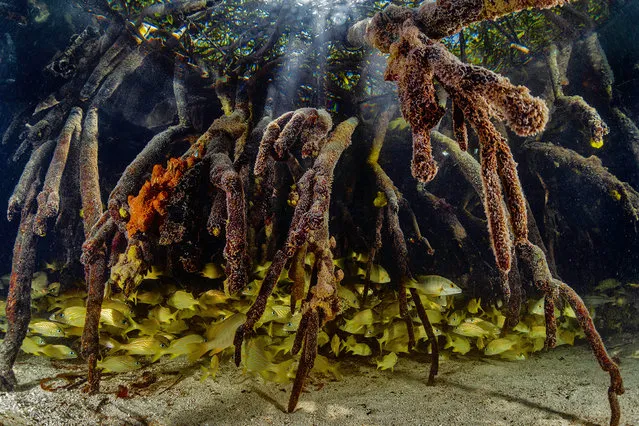
Mangroves & Underwater – Highly Commended. French Grunts by Lorenzo Mittiga, Netherlands Antilles. A school of juvenile french grunts (Haemulon flavolineatum) using the roots of the mangroves as a nursery before moving onto the reefs of the Caribbean Islands. (Photo by Lorenzo Mittiga/Mangrove Photographer of the Year)
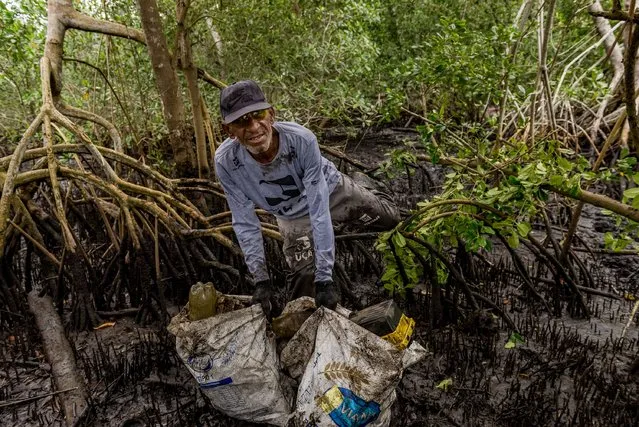
Mangroves & Humans – Highly Commended. There is Hope in the Trash by Rodrigo Silva Campanario, Brazil. A local fisherman, Paulo Silva, collects waste from the mangroves in the Bay of Guanabara. NGO Guardians of the Sea have helped to cleanup over 11 tons of garbage in these coastal forests. (Photo by Rodrigo Silva Campanario/Mangrove Photographer of the Year)
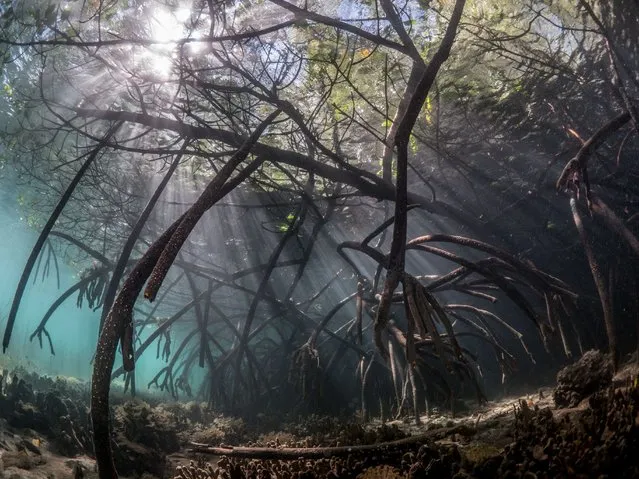
Mangroves & Underwater – Highly Commended. An Underwater Forest by Marelo Johan Ogata, Indonesia. The light, angles and shapes of a mangrove forest underwater. (Photo by Marelo Johan Ogata/Mangrove Photographer of the Year)
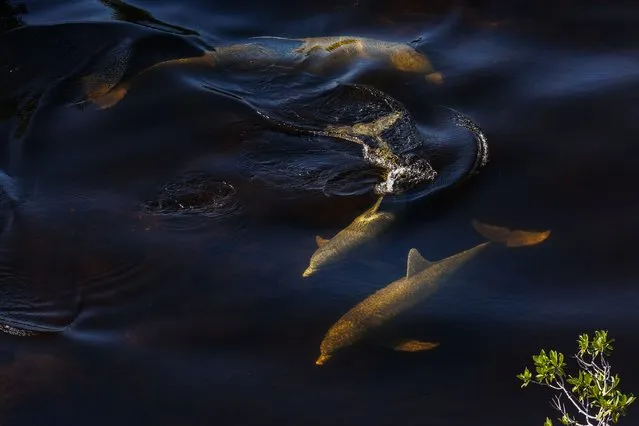
Mangroves & Wildlife – Highly Commended. Foraging Bottlenose Dolphins by Mark Ian Cook, US. A pod of bottlenose dolphins actively forage in the mangrove lined creeks of Shark River Slough in the southern Everglades, Florida. (Photo by Mark Ian Cook/Mangrove Photographer of the Year)
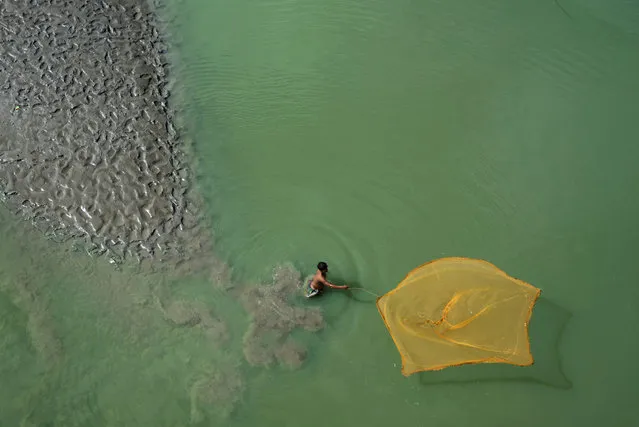
Mangroves and Humans – Highly Commended. Livelihood by Rajesh Dhar, India. A fisherman casts his net in the river Matla in Canning during the low tide. Around 600,000 people are dependent in various ways on the Sundarbans’ resources, such as fish, crabs, honey, and nipa palm, or golpata (Nypa fruticans), for their livelihood. (Photo by Rajesh Dhar/Mangrove Photographer of the Year)
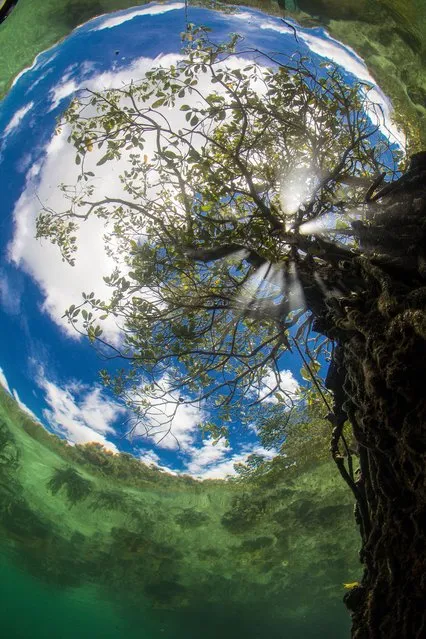
Mangroves & Underwater – Highly Commended. Different Perspective by Hamid Rad, Indonesia. A little world of its own. A lonely mangrove tree growing in the shallow waters of a lagoon in Raja Ampat, Indonesia. Corals growing around can be seen in the reflection (green area). (Photo by Hamid Rad/Mangrove Photographer of the Year)
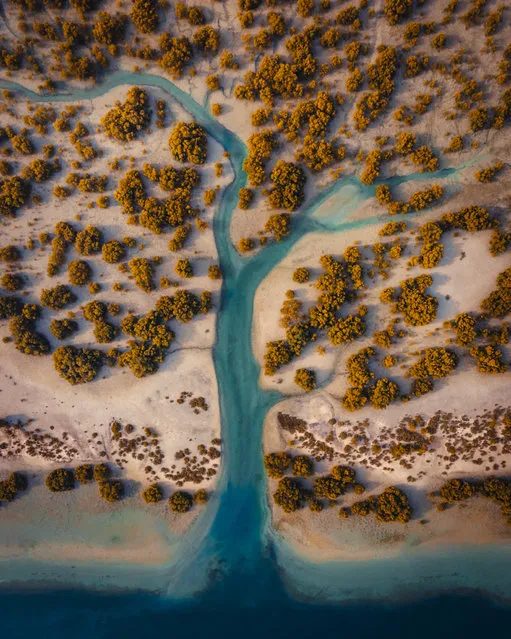
Mangroves & Landscape – Highly Commended. Tree of Life by Amar Habeeb, UAE. @amarhabeeb Most of the mangroves found along UAE’s coastline, are found in Abu Dhabi, acting as a “green lung” for the city. Patterns resembling a tree-like structure was spotted in the mangroves. (Photo by Amar Habeeb/Mangrove Photographer of the Year)
05 Nov 2022 04:24:00,
post received
0 comments
